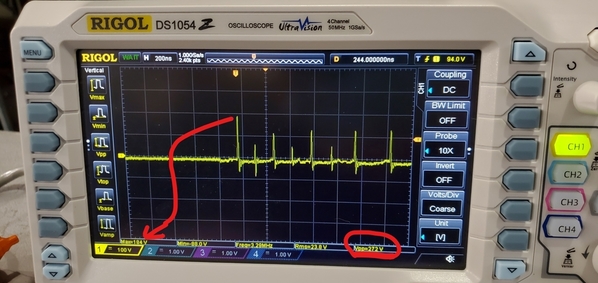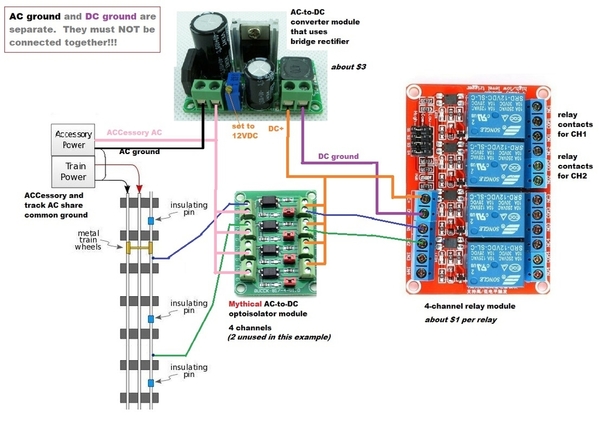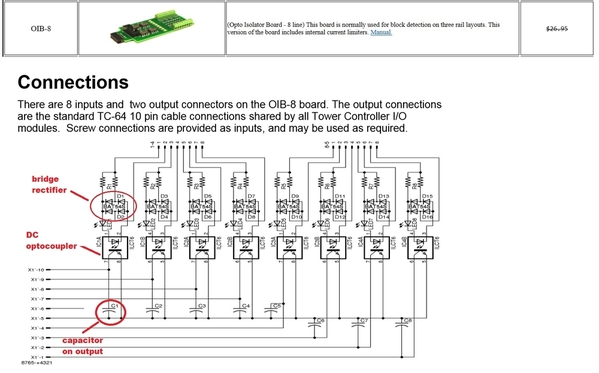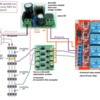Do insulated outer rails (used for signal blocks) cause issues with DCS on very large layouts?
I only ask because I have heard it can help legacy signal strength if you bridge insulated signal blocks with a capacitor at the gap between blocks. I am wondering if those same concepts apply to DCS at all.
Also can relays activated by an outer rail cause any issue for the TIU? especially in terms of EMF? Are opto isloators the best solution(or even recommended) for signal activation? (large layout several hundred feet per line.)
I write answers to this all over, but I can put it here too.
So conceptually your layout is floating with respect to like all of the planet earth. The TMCC/Legacy voltage is a potential between the big planet earth, and the ground of your layout. Lets call it "VL". The DCS signal sits on top of this in series lets call it "VD". So at the outside rails of this wonderful layout has potential "VL" with respect to planet Earth and the center rail has potential "VL+VD" with respect to planet Earth. Now your TIU and DCS Trains are with respect to the the outer rail (VL) so at the PS3 board or TIU board it's going to be Vin = (VL+VD)-VL = just VD so conceptually the Legacy signal is invisible.
That was the concept. Now in practice:
1. The sources VD and VL have Thevnin impedances, lets call them ZD and ZL keeping our convention.
2. The center rail has capacitance to ground Cin and the outside rails have capacitance to ground Cout. One has 1 rail and one has 2 rail so even considering these to be similar is a bit silly. So from basics Zin is going to be 1/[JwCin] and Zout is going to be 1/[jwCout].
Okay so by good old linear superposition we can compute the contribution of each VL and VD to the voltage at the locomotive Vtrain.

These results have some interesting implications. (1) even balancing the inside and outside rail capacitance perfectly won't stop the DCS signal from collecting some superimposed legacy signal, because there is another path to ground through the legacy base (ZL) that more strongly influences the outer vs the inside rail. (2) If ZL goes to infinity (that is saying if the legacy base goes away) there is no cross talk. That's a no brainer. (3) The term (ZL||Zout + Zin) which describes the parallel capacitance of the layout and legacy base directly eats away at your DCS signal at it gets smaller (cap gets bigger) since... Vtraind = Vd/(1+Zd/[ZL||Zout + Zin]).
So in general anything thats in parallel with ZL makes it a smaller number, (IE having more paths to planet earth through power supplies, relays, capacitance inside control devices), makes the situation worse. If you like math you can breakup Zd into unit sections of track and put other reactance in series to consider the little capacitors, but given the minor role Zd plays in the transfer function (since Zd<<Zin) , the real key is to manage the capacitances to planet Earth.
















